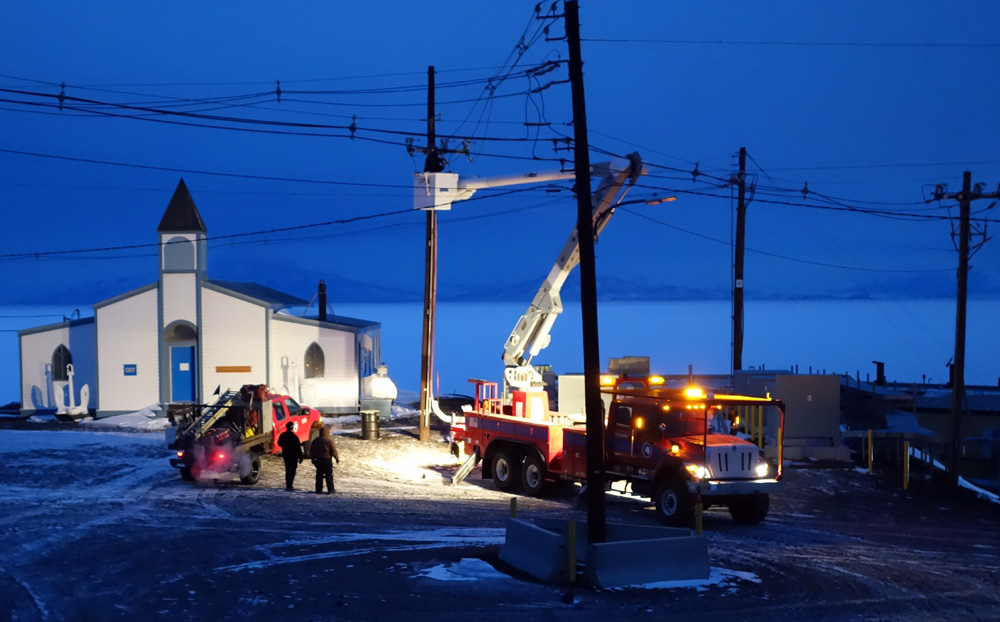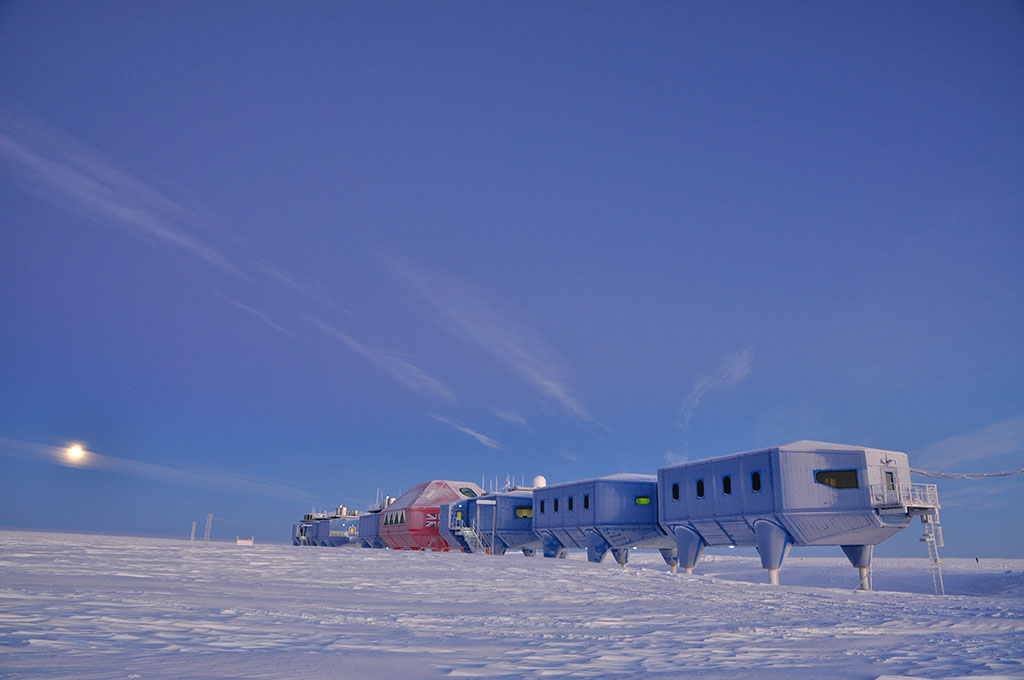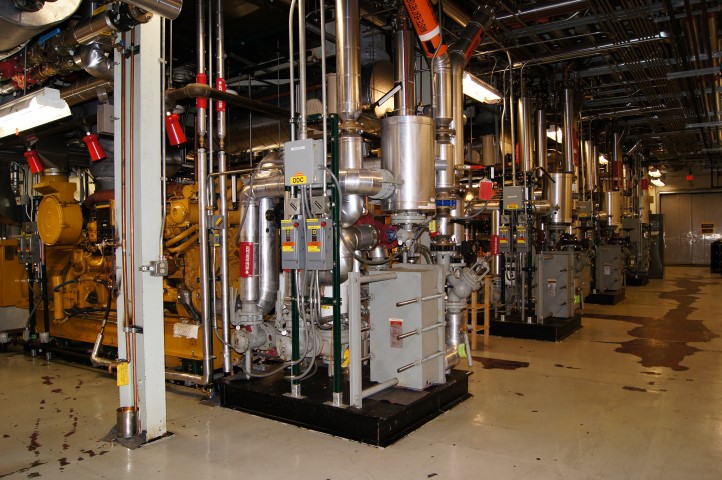Safety checkPower loss at British base reminder that research stations must remain vigilantPosted August 29, 2014
The sudden loss of power and heat at a British Antarctic research base this month during the austral winter is a potential nightmare scenario for anyone wintering over on the world’s coldest continent. The power loss at Halley Research Station VI Could something similar happen at one of the U.S. Antarctic Program’s “McMurdo [Station] The largest U.S. research station, with upwards of 900 people in the summer and about 150 in the winter, McMurdo has redundant power and heating systems. Its main power plant boasts three diesel generators, with two more in the nearby water plant. So-called “waste” heat from the generators is used to keep many of the critical buildings warm as well as improving overall fuel efficiency. A failure of one of the five generators would not affect any of the others, Henriksen said. “If a pipe were to break or a valve fail from any of the generators, it would not result in the loss of any of the other generators,” he said. “If the heat recovery system failed, we would not overheat the operating generator or generators since their individual radiators are separated from the heat recovery system through a heat exchanger.” Buildings served by waste heat are backed up with their own boilers, he added. Reverse osmosis is used to provide water to the station, with a back-up system in the power plant to the main water plant facility. McMurdo’s Achilles heel may be its power distribution system, with above-ground power lines that are susceptible to wind or other damage. In fact, this winter the station lost a power pole and a series of buildings were without power for about a week. “We were able to move people around and set up a temporary generator for the one building that had to stay warm,” Henriksen said. “In general, though, we have five separate power distribution lines serving different parts of McMurdo. If something happens to one, we are able to move people around to heated buildings if they are affected.” Amundsen-Scott South Pole Station “We have very good redundancy and controls in our station,” said Bill Coughran, South Pole Station area manager for the contractor company that runs most of the logistics for NSF. “I don’t know of a specific failure point on our waste heat system that would cause the same results [as Halley]. Our controls and safety devices would prevent a severe overheating event such as it appears may have happened at Halley.” In the unlikely event of failure of the main power plant, such as a fire, then the emergency power plant could produce enough power to sustain life support systems, according to Coughran. “Life in back-up conditions would be snug and austere, but would provide warmth and safe facilities until relief flights could arrive,” he said. “The emergency pod and amenities are designed as a life boat, not as a back-up station. Science support would cease, and power and heat to the portions of the station outside the emergency pod would be interrupted in such a contingency.” Steve Wickins, senior facility operations analyst for Palmer Station Palmer Station, the USAP’s smallest research facility, uses some waste heat but also boilers as back-up and primary heating systems, depending on the building. “Halley’s generators still operate but they do not have sufficient power capacity to heat the buildings on electrical power,” he noted. Halley VI is the second Antarctic research base crippled by an incident in the last three years. In February 2012, an explosion in the machine room at Brazil’s Comandante Ferraz Antarctic Station that housed the station's generators ignited a fire. The blaze destroyed about two-thirds of the facility and killed two people. A new station is under construction and expected to be operational in March 2015. Fire is an especial concern in the Antarctic, where dry conditions can allow a blaze to burn quickly out of control. Each station has caches of supplies in case any major facilities are damaged. For example, at Palmer Station, dehydrated rations and camp stoves are stored in various outbuildings. McMurdo Station has several smaller kitchens in addition to the main facility in the central hub known as Building 155. 
Photo Credit: Eli Duke/Antarctic Photo Library
Fuel tanks at South Pole Station are located under a steel arch.
“If we have an emergency during the summer, it will be more difficult to manage housing and meals for the much larger numbers of people, but unlike the winters, we do have regular flights, and we can reduce the population quickly to manage the situation,” Henriksen said. “While it wouldn't be comfortable, it would be functional.” Palmer is accessible year-round by vessel, though sea ice could make it difficult for a ship to reach the maritime research station. An emergency at South Pole Station in the winter – isolated between February and October, with winter-time temperatures that can reach below minus 100 degrees Fahrenheit – is a much more serious situation. “We have to be ready for any circumstance that befalls us in the winter season at Pole,” Coughran said. “We have a great station, good procedures and a constant attention to readiness and improving processes – but by far our greatest asset against mishap and unexpected failures is our great staff of people, diligent maintenance and thorough understanding of the station systems and back-up systems.” A veteran of multiple winters at both McMurdo and South Pole, Henriksen said emergency procedures are reviewed on an annual basis. “Incidents at other stations remind us that we can't become complacent,” he said. “These are reminders to all the Antarctic bases and stations, especially those without close neighbors, that back-up systems and good procedures are critical for survival, especially in the austral winters when getting outside help if very difficult.” |



For USAP Participants |
For The Public |
For Researchers and EducatorsContact UsU.S. National Science FoundationOffice of Polar Programs Geosciences Directorate 2415 Eisenhower Avenue, Suite W7100 Alexandria, VA 22314 Sign up for the NSF Office of Polar Programs newsletter and events. Feedback Form |





